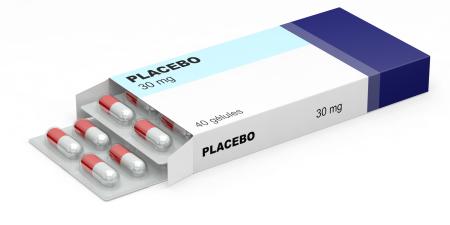A recent proposal to address conflicts of interest in academic medical centers suggested that industry support of continuing medical education (CME) activities should be limited to contributions to a central fund that would disburse the money to programs accredited by the Accreditation Council for Continuing Medical Education. The authors of the proposal reason that this arrangement would "permit the central repository and the ultimate recipients of funds to remain free from influence by any one donor company" [1]. We would go further: only CME activities that are entirely free of pharmaceutical industry funding should qualify as education.
The superficially appealing but fundamentally flawed “pooled donor” solution seeks to preserve access to pharmaceutical funding while restraining donor influence on educational content. But the assumption that blending competing conflicts somehow cancels the conflicts out does not bear close examination.
Medicine is a profession, and pharmaceutical marketing is a business. The obligation of physicians is to patients; the obligation of a pharmaceutical company is to shareholders. The interests of medicine and pharmaceutical manufacturers are not congruent. The collegial relationship between the two would undoubtedly cool were physician signatures not a prerequisite for prescription drug sales. Physicians are considered by the industry to be a barrier to surmount; in an article called “A Medical Publisher Reminds Us: Don’t Forget the Gatekeepers,” aimed at the pharmaceutical industry, the author tells drug execs that prescribers “stand between the consumer and your drug” [2].
Gifts have been shown to create obligations. Indebtedness to pharmaceutical manufacturers as an industry rather than to individual companies merely renders the obligation less visible—and more decorous, perhaps. It is in the interests of all pharmaceutical companies to engage in disease mongering by expanding diagnostic categories so more people are eligible for drug treatment and to convince physicians that drugs are the only viable therapeutic options. While physicians who receive CME funded by a corporate coalition may not be subjected to presentations promoting specific drugs, the “Drugs-R-Us” model of medicine is still reinforced. Diet, exercise and other nonpharmacologic approaches to disease prevention and treatment will continue to be marginalized.
Continuing medical education should not be equated with sales; industry-funded CME is a precursor to sales. Pharmaceutical company sponsorship of CME is designed to create or reinforce perceptions about disease that increase prescriptions for target classes of drugs. For example, speakers may be hired to deliver the messages that disease X is epidemic, underdiagnosed and debilitating and that effective treatments are available. Nothing there to raise eyebrows; for industry, the most successful CME events appear completely objective. The sponsor’s drugs are not emphasized because physicians reject educational presentations that seem to be advertisements. In fact, speakers who hope to get more industry engagements by hawking the sponsor’s drugs will find themselves dumped from the CME circuit instead. Speakers who sound like drug reps alienate physician audiences and thus work against industry interests. Pharmaceutical company-sponsored CME is designed to increase the receptivity of physicians to prescribe more of a target group of drugs. It is then up to the sales staff of competing drug companies to determine the market share of drugs within that group.
Rather than attempting to devise ethical ways for physicians to maintain their dependence on industry-funded CME, it is time to search for true alternatives. The education of physicians should be funded by physicians, not by a third party whose profits are directly related to prescribing behavior. Weaning CME from the industry breast is like striving to meet our energy needs without oil—tough but necessary. The presumption that pharmaceutical manufacturers’ funds are necessary for CME permeates medical culture. The AMA itself takes industry funds. In 2000, in what Carl Elliott has called a “stunningly inept” decision, the AMA accepted pharmaceutical company co-funding for a campaign to provide doctors with ethical guidelines regarding gifts from industry [3].
In 2004, more than $2 billion was spent on CME; pharmaceutical manufacturers paid for more than half of that sum. Firms that manufacture FDA-regulated products (primarily pharmaceuticals) provided three-quarters (74.7 percent) of the income of medical education and communication companies (MECCs). CME provided by medical schools is almost equally reliant on the pharmaceutical industry, which provides almost two-thirds (63.8 percent) of CME income to medical schools [4].
This distinction between MECCs and medical schools may blur further with the advent of academic-industry partnerships. One example is Engaging Minds, a joint venture among University of Medicine and Dentistry of New Jersey (UMDNJ), Pegasus Healthcare International in Montreal, and Saber Communications in New York [5]. Until it was removed recently, a brochure titled "A University-Industry Partnership in Education" on the Web site of UMDNJ's Center for Outreach and Continuing Education (CCOE) boasted that "CCOE and UMDMJ faculty can advise, assist, and advocate to propose and position educational activities for product awareness, acceptance, and utilization" [6].
Pharmaceutical companies have good reason to value CME. A 2004 survey of 4,600 physicians, conducted by Verispan, found that educational seminars ranked highest in effective sales tactics [7]. A smaller industry poll of 237 physicians in the fall of 2005 also found that physicians (at least those attending CME events where the survey was done) rated CME to be their most valued information source, followed closely by medical journals and peer interaction [8].
It is not as though physicians cannot afford to pay for CME. In the U.S. physicians and surgeons have the highest median income of all workers [9]. Expenses for CME courses are tax-deductible, and free CME opportunities are regularly offered through federal agencies. A 2004 editorial in the Canadian Medical Association Journal asks pointedly, “does the harm from allowing CME to be orchestrated by pharmaceutical companies outweigh the benefits of being able to offer it at a greatly subsidized cost, or free, to physicians?... Playing second fiddle in the big-pharma orchestra is not leadership” [10].
Several years ago, the Mahatma Gandhi Institute of Medical Sciences, a rural medical college in Sevagram, Maharashtra, India, decided to refuse drug industry support for any conferences, seminars or workshops, thus becoming “the first medical institute in the country to keep [the] drug industry away from medical education” [11]. Surely, if a rural medical college in India can afford to scorn the bribes of Pharma, one medical school in the US could show the same leadership?
References
- Brennan TA, Rothman DJ, Blank L, et al. Health industry practices that create conflicts of interest: a policy proposal for academic medical centers. JAMA. 2006;295(4):429-433.
-
Pizor TC. A medical publisher reminds us: don’t forget the gatekeepers. Med Mark Media. 1998;33:64-69.
- Elliott C. Pharma goes to the laundry. Public relations and the business of medical education. Hastings Cent Rep. 2004;34(5):18-23.
-
Accreditation Council for Continuing Medical Education. Annual Report Data 2004. Available at: http://www.accme.org/dir_docs/doc_upload/2130a818-1c9f-400b-9d54-56b3f8f9a2f6_uploaddocument.pdf. Accessed May 1, 2006.
-
Hurley B. Walker C. eds. CCOE takes lead in new venture. UMDNJ Rounds.January/February 2005:4. Available at: http://www.umdnj.edu/umcweb/marketing_and_communications/publications/umdnj_rounds/rounds_jan_feb_05.pdf. Accessed May 23, 2006.
-
Center for Outreach and Continuing Education. Google cached HTML version available at: 72.14.209.104/search?q=cache:0Zn9NO-_yt0J:ccoe.umdnj.edu/Pub/pdf/UnivIndustry.pdf+&hl=en&gl=us&ct=clnk&cd=1. Accessed May 22, 2006. [Original pdf has been removed from the UMDNJ Web site.]
-
Industry sponsored meetings and events are favored by physicians. Product Management Today. March 2005:6.
-
Chase J. Physicians on pharma. Med Mark Media. 2005;40(12):62.
-
Census Bureau. Figure 3: Fifty occupations with the highest median earnings for year-round, full-time workers: 1999. Evidence From Census 2000 About Earnings by Detailed Occupation for Men and Women. Published May 2004. Available at http://www.census.gov/prod/2004pubs/censr-15.pdf. Accessed May 2, 2006.
-
What’s wrong with CME (editorial). CMAJ. 2004;170(6):917.
-
Kalantri SP. Drug industry and medical conferences. Indian J Anesthes. 2004;48:28-30. Available at: http://medind.nic.in/iad/t04/i1/iadt04i1p28.pdf. Accessed May 9, 2006.



